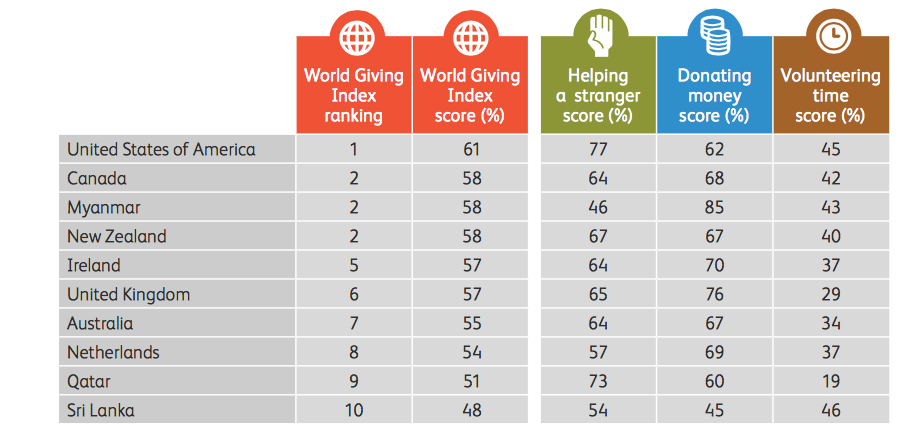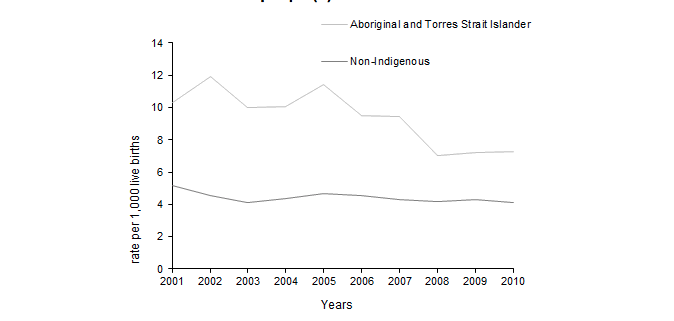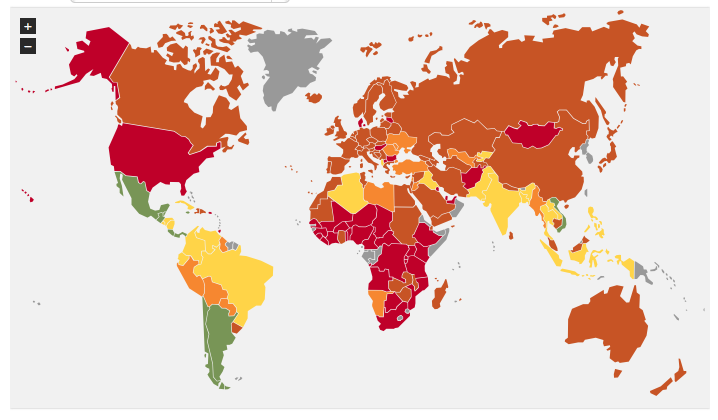As a model of how our society works, you can do a lot worse than Monopoly. When I was a kid I loved playing (and cheating) the game. With the racing car as my token I would accumulate as much real estate as possible, focusing on buying railway stations and utilities, as well as having a very special relationship with the banker.
I rarely lost a game, but that was due to my exemplary cheating rather than any innate talent for imaginary wealth creation.
The distinction between talent and luck is important.
Last week after Credit Suisse released their Global Wealth Report, the Australian media went into back-slapping congratulatory hyperdrive snorting that Australians were the wealthiest richest in the world.
- Property makes Australians the world’s richest, says Credit Suisse
- Credit Suisse reveals Australians are the richest in the world — and we know why
- Australia tops world’s wealthiest list
- Australians the world’s richest thanks to property: bank study
- Why Australia is the richest country in the world (for the fifth year in a row)
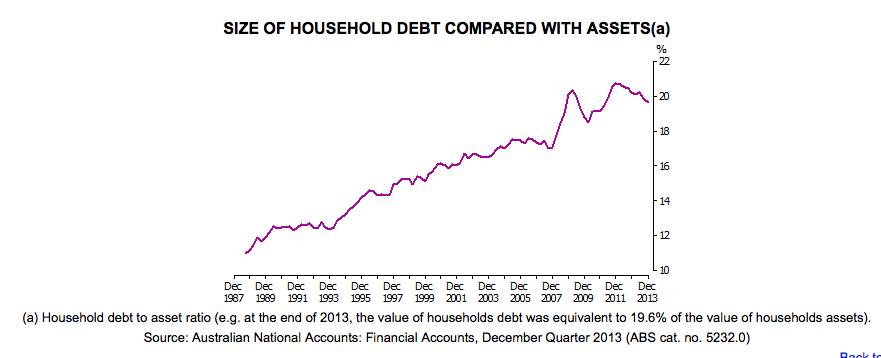
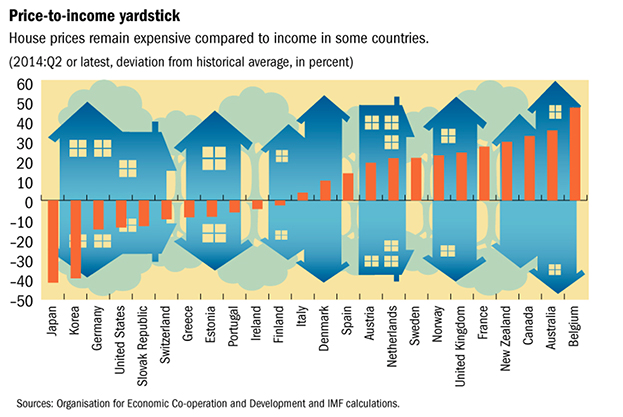


The big flaw in the Credit Suisse report is that it ignored Australia’s unenviable position as having the second most unaffordable housing in the world, and one of the highest global debt to income levels. Most journalists also ignored Australia’s very high debt to income ratio, and Australia’s worryingly high concentration of wealth in property (60%).
Importantly, there was no correlation made between other measurements of wealth like life expectancy, literacy, infant mortality, health, and well being. We need to have a rigorous debate about real wealth in this country so that public policy can be shaped towards growing what used be called the Common Wealth.
The Credit Suisse report “measures and analyzes trends in wealth across nations from the very base of the “wealth pyramid” to the ultra-high net worth individuals”. For the Credit Suisse bankers, wealth is measured in the economic output of the economy – basically the Gross Domestic Product (GDP) with a smattering of dividend discount models and inflation rates.
GDP is a pretty crap measure of wealth and income.
Nobel Prize winning economist, Joseph Stiglitz, has said that using GDP as a global measure of wealth and income has had a damaging impact. He blames the 2008 global financial crisis partially on GDP being a bad metric.
“Our GDP was bloated by fictitious numbers and our European counterparts believed these. It affected the way we thought about policies. Market prices didn’t affect what was really going on in the economy. This led to not only distorted incentives, but was a distorted investment in how companies were doing.”
In his excellent book Betterness: Economics for Humans, Umair Haque calls for a better way of measuring wealth than GDP. He asks for a wealth measure that looks at every kind of real wealth including social, human, and creative capital.
Haque’s key principle is that (emphasis is mine)
“an economy isn;t just an end in itself, but that it’s a means to the end of a good life. That life isn’t a means to the end of wealth, but that wealth is a means to the end of a good life. That a good life is composed more of what you can’t buy than what you can. That a good life isn’t built first on disposable stuff that matters in economic terms, but on an economy that matters in human terms.”
So how does Australia do in real wealth? How rich are we really?
Social Capital
Social capital is a measure of the wealth of relationships. A healthy social capital will be expressed in involvement in the community, philanthropy, high rates of volunteering, and overall tolerance for others.
If the recent “debate” about the Burqa and Niqab is any guide, then Australia has a lot of room for improvement to make in social capital.
With respect to tolerance, Australia still limits the institution of marriage to heterosexual couples unlike most of the USA and UK and 15 countries which places us pretty well down the scale and well below radical countries like South Africa and Canada.
The World Giving index looks at charitable activity around the world and looks at “the percentage of people who, in a typical month, donate money to charity, volunteer their time, and help a stranger”. In the 2013 report Australia is ranked 7th which is pretty impressive. Unfortunately, New Zealand is ranked ahead of us at equal second together with Canada and Myanmar.
Any discussion about social capital must include how Australia treats asylum seekers. Lebanon hosts 178 refugees per 1,000 inhabitants while Australia hosts 1 per 1,000.
That’s right, despite all the fuss from the federal politicians Australia hosts exactly 1 refugee per 1,oo0. And to put this not perspective the 2013 budget estimates $1.2 billion expenditure for Immigration and Border Protection.
Overall, Australia is ranked well outside the top ten based on the above criteria.
What’s important here is that there is much room for improvement with social capital by liberating marriage, treating asylum seekers humanely, avoiding negative debates that vilify muslims, and expanding philanthropic efforts.
Human Capital
Human capital is a measure of health, life expectancy, and infant mortality. There are a heap of items that could be included to effectively measure human capital but for me, the best measure are the book-ends – birth and death, with a quick look at some health factors in between.
For Australia, the high rates of infant mortality in indigenous communities is a national shame consistently ignored by politicians, the media, and most rich Australians. The Australian Bureau of Statistics (ABS) chart below shows infant mortality rates per 1,000 births.
The OECD infant mortality report ranks Australia at 23 with 3.8 deaths per live 1,000 births. This compares well with ABS data which shows the non-indigenous rate as 4 per 1,000 and the indigenous mortality rate as 8 per 1,000.
8 per 1,000!
The same OECD data ranks Australia 7th for life-expectancy at birth, with a baby born in 2013 expected to live to 82.
Importantly, Australia is part of an exclusive 100% public health coverage club which excludes the United States. The USA spends over $8,500 per person which is 50% higher than countries with well established public health systems like Norway and Sweden.
As the USA ranks poorly for infant mortality and life expectancy the obvious conclusion is that public health spending is more efficient at improving health capital than private spending.
This should be a warning to the Abbott government and the price signal obsessed neo-classissists.
On human capital Australia is a strong performer due largely to the open public health funding. The incredibly poor health of indigenous communities prevents Australia ranking as high as global leaders like Japan and the Scandinavian countries.
Environmental Capital
Australia is the world’s largest exporter of the world’s dirtiest energy source – coal.
Per capita, Australia emits more carbon than any other country.
The Australian government has approved the dumping of mining waste in the World Heritage listed Great Barrier Reef.
In 2014, the Australian government repealed the Carbon Tax which was a globally accepted best practice way of handling the damaging effects of carbon pollution on the environment – ironically enough through price signals.
With environmental capital Australia is among the worst of the worst, equivalent to North Korea or Saudi Arabia on human rights.
Intellectual Capital
Australia ranks well in global education rankings and attracts much foreign investment due to the quality of our universities.
The OECD ranks Australia consistently in the top 10 (average of 7) for students attending school, reading, science, financial literacy, problem solving, and investment in education.
Despite our chest beating about inventing WIFI, Australia ranks pretty poorly in innovation with IP Australia ranking Australia as 22 in innovation outputs (patents, trademarks). With funding cuts to the CSIRO and no science minister in the federal cabinet I fail to see how the situation will improve.
While no disgrace in intellectual capital, Australia is not the among the best and likely to slide further due to a lack of investment.
The Happy Planet Index
The Happy Planet Index looks at life expectancy, experienced well-being and Ecological Footprint. Australia ranks outside the top 50 as do most wealthy developed countries. The map below shows green for good happiness, orange for middling, and red for bad.
Australia’s bad ranking has more to do with an appalling environmental record than poor life expectancy or low experienced well being.
This makes sense.
How we impact the environment is the best measure of how wealthy our children and their children will be. An economy, a culture which deprioritises the environment to focus instead on financial wealth (and property) will negatively impact social, human, and intellectual capital for current and future generations.
Summary
This study of real wealth is highly assumptive and I’m sure there are statisticians and data-junkies who will tell me I’m full of shit, that the data can be correlated a different way. Please do!
The point is that a culture obsessed with property and xenophobia should be doing fewer self-congratulory laps of honour around the public-private-partnership funded road network and more bench-marking against the stuff that matters.
It is a tragedy that our culture celebrates being ranked the most wealthy, the richest, in the world while spending billions keeping the most vulnerable out, while parts of our community have an infant mortality rate 4 times higher than the dominant culture, while resource companies pollute the Great Barrier Reef, while our coal is exported to cities where marathon runners wear masks to protect their lungs.
The key question we need to ask ourselves is: What takes more talent, the accumulation of wealth through property or reducing indigenous infant mortality rates?
Our collective pride in being financially wealthy, in being RICH, coupled with a collective amnesia about our social, human, and intellectual poverty is nothing more than a cheap board-game played for laughs. It’s time we took our place in the real world.
Sources used in this post
- https://publications.credit-suisse.com/tasks/render/file/?fileID=60931FDE-A2D2-F568-B041B58C5EA591A4
- http://www.abs.gov.au/ausstats/abs@.nsf/lookup/4102.0main+features202014
- http://unhcr.org.au/unhcr/images/Global%20Trends%202013.pdf
- https://www.cafonline.org/PDF/WorldGivingIndex2013_1374AWEB.pdf
- http://www.oecd.org/els/health-systems/Health-at-a-Glance-2013.pdf
- http://www.abs.gov.au/ausstats/abs@.nsf/Lookup/4704.0Chapter840Oct%202010
- http://gpseducation.oecd.org/CountryProfile?primaryCountry=AUS&treshold=10&topic=PI
- http://www.ipaustralia.gov.au/about-us/news-and-media/feature-articles-listing/global-innovation-index-2014
- http://www.happyplanetindex.org/data/


